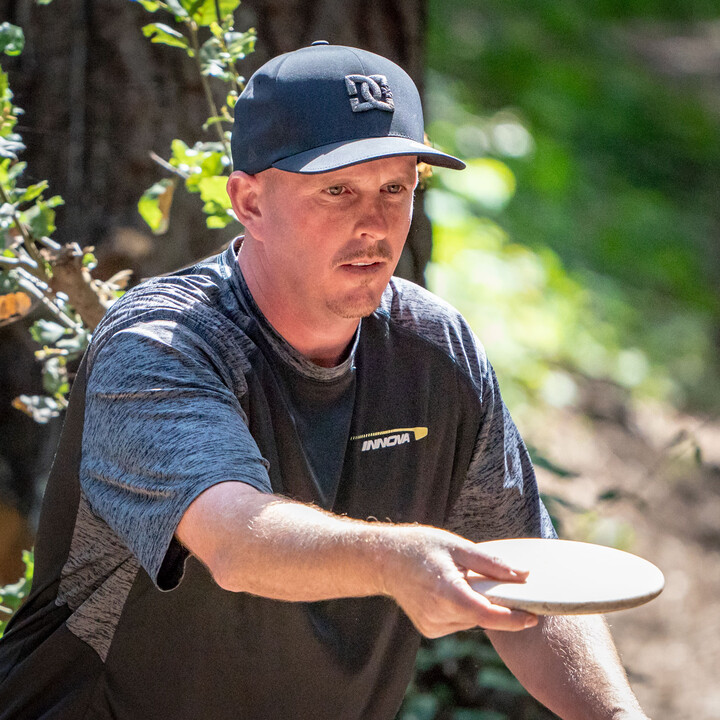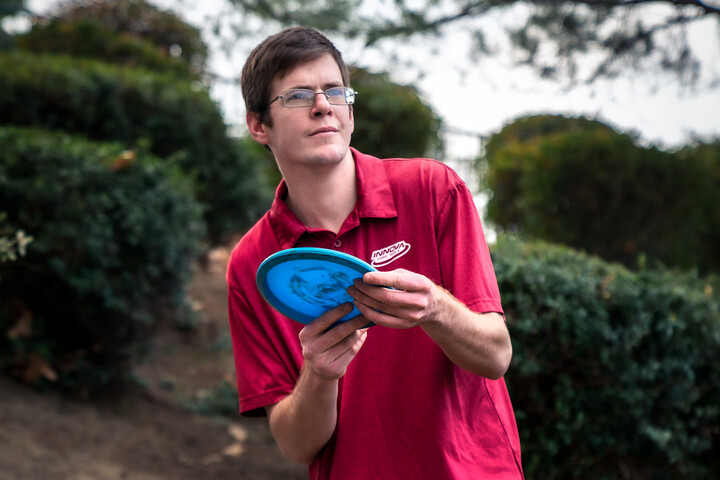6 Tips for a Better Disc Golf Grip
Table of Contents
As you seek to become a better disc golfer, there are many things you will want to try. You can do some fieldwork to work on your form, learn different types of throws and understand how all your discs will fly. You might practice release angles, refine your footwork and dial in your upper body form to generate more power, accuracy or consistency. You may spend plenty of time practicing putts or playing rounds. These are all valuable skills to learn during your practice sessions.

One factor that is often overlooked—even by some of the best amateur players and local pros—is the disc golf grip. You can work on your form all day and repetition by throwing a hundred different discs. However, if you have a poor grip on the disc or are inconsistent with how you grip the disc for each shot style, you can only progress so far as a disc golfer. You wouldn’t work on your golf swing without making sure your grip and other elements of your hand placement were issue-free.
With this in mind, we’ve put together this list of disc golf grip tips that can help you improve your game:
1. Learn the Different Grips
We’re not going to go into all the unique ways you can hold a disc for every type of throw. There are plenty of videos and tutorials out there from professional disc golfers, who will show you how they grip certain shots. There are power grips, pinch grips, fan grips and everything in between. There are many interesting and effective ways to hold a disc, whether you are throwing a backhand, forehand (sidearm), touchy approach, long putt, short putt, roller, thumber, grenade or any other kind of throw you can imagine.
2. Try the Different Grips
As you learn about new grip styles and techniques, try them out. Experiment in your fieldwork with various throws and grips. Try forehand grips, backhand grips, tight grips, firm grips, common grips and uncommon grips to see what is most effective for you. We always say there is no better way to learn than to simply get out there and throw. Use your practice time to play around with different grips and throwing methods as you learn what gives you the best results. Don’t focus too much on other aspects of your form such as followthrough, stable vs. understable discs, aiming, etc. Continue to practice and refine your form to develop muscle memory and consistency.
3. Grip Pressure is Key
Throwing a disc golf disc is similar to throwing a baseball, gripping a golf club or holding a tennis racket in the sense that you need to find the right balance of grip pressure. You don’t want to grip the disc too tight. Likewise, you don’t want to hold it too loosely either. If you suffer from early releases, then you may have too light a grip on the disc. If you tend to griplock the disc, then you may be holding it too tight. Like Goldilocks, you are looking for that grip that is “just right”—a grip that gives you control and consistency for your arm speed and throwing form.
4. Don’t Forget About the Thumb

Most grip tutorials you find will focus on what to do with your fingers underneath the rim. Your thumb is equally important to apply pressure on the top of the disc. It not only provides control, but your thumb can actually play a pivotal role during the release to generate additional spin or keep the disc on the proper angle. Not enough thumb pressure may result in a nose-down throw that goes straight into the ground. Too much thumb pressure can give you a nose-up release that will stall out. That’s not good for getting full flight out of distance drivers, but can actually be useful on approach shots and putts when you can use an air bounce to your advantage. Just like you experiment with different grip techniques, play around with your thumb position and pressure to find what works best for you.
5. Plastic Can Make a Difference
If you struggle with a secure grip—especially in cold or wet weather conditions—you will also want to try out different plastics. For instance, many players love Innova GStar, XT, Nexus and R-Pro plastics in cold/wet conditions because it’s naturally grippier than Star, Champion or DX plastic. Yet, there are some players who like a slicker plastic feel. Plastic selection won’t necessarily help your throwing form, but something that feels better in your hand can definitely make a difference in your confidence in shots on the disc golf course.
6. One Size Does Not Fit All

When it comes to disc golf grips, there is no one magic bullet that works for every person. We all have different hand sizes, wrist strength, followthrough motions, arm speeds and throwing forms. Of course, every disc is designed to do something unique, as well. How you grip your distance drivers is likely going to be completely different to how you grip your putters because of the rim shape and the types of throws that you are attempting.
Watch the tutorials and learn from the pros, but always remember that your game is your own and you have to work hard to make yourself a better player each round. This means it usually takes some experimentation and lots of practice to keep improving your score, both mentally and physically. Understanding your grip is one more step you’ll need to take on the journey to becoming a great disc golfer with more consistency, control and power.
What's Next?
Need help finding the perfect disc for a specific shot, better accuracy, or more distance? We’re here to help! Just follow the link below to answer a short questionnaire. We’ll send you FREE personalized disc recommendations within 1 business day along with a coupon code for $5 off your next order.
GET PRO TIPS



